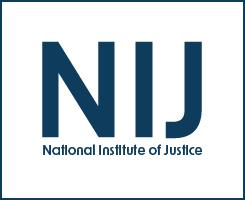Assessing a Trauma-Informed Decision Protocol for Juvenile Justice, Final Technical Report
Battling the Backlog: A Novel Bioanalytical Technology for the Forensic Analysis of Sexual Assault Evidence
Identification and Analysis of Body Fluid Traces for Forensic Purposes Using Vibrational Spectroscopy and Chemometrics
Large-scale and Deep Spatiotemporal Point-Process Models
Cognitive Bias and Handwriting Examination: Concepts, Current Knowledge, and Future Practice
MorphoPASSE: Morphological pelvis and skull sex estimation program in Sex Estimation of the Human Skeleton: History, Methods, and Emerging Techniques
Does Lying Require More or Less Working Memory and What Does it Mean for the Legal System
Insect Development as it Relates to Forensic Entomology
Using Microbiome Tools for Estimating the Postmortem Interval
Adolescent Neurocognitive Maturity Mediates Paths to Altered Social Norms and Vulnerability in Emerging Adulthood
Application of Software Engineering Principles to Synthetic Biology and Emerging Regulatory Concerns
Identification of Cadaveric Liver Tissues Using Thanatotranscriptome Biomarkers
"I Feel Like I'm Always on Edge": Perceptions of Parole Supervision by Parolees with Substance Use Disorders
Securing Officer Buy-in When a Beneficial Technology Increases Workload: Best Practices for Implementing Gunshot Detection Technology
Public Surveillance Cameras and Crime: The Impact of Different Camera Types on Crime and Clearances
Optimizing Public Surveillance Systems for Crime Control and Prevention: A Guide for Law Enforcement and their Municipal Partners
Lessons Learned Implementing Video Analytics in a Public Surveillance Network
DNA backlog reduction strategy: Law enforcement agency partnerships for a successful biological screening laboratory
Estimating the Impact of Research Practitioner Partnerships on Evidence-based Program Implementation
Mass Spectrometry Imaging of Latent Fingerprints Using Titanium Oxide Development Powder as an Existing Matrix
Context-Aware Dimensionality Reduction Deconvolutes Gut Microbial Community Dynamics
States' SORNA Implementation Journeys: Lessons Learned and Policy Implications
What Does Success Look Like? Lessons From the Innovations in Community-Based Crime Reduction (CBCR) Program
Detection of Inflicted Bruises by Alternate Light: Results of a Randomized Controlled Trial
Occurrence and Associative Value of Non-Identifiable Fingermarks
Research Forensic Library
We invite you to also search the Research Forensic Library, a curated collection of publicly-accessible material relating to every discipline of the forensic sciences.


